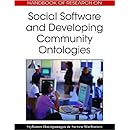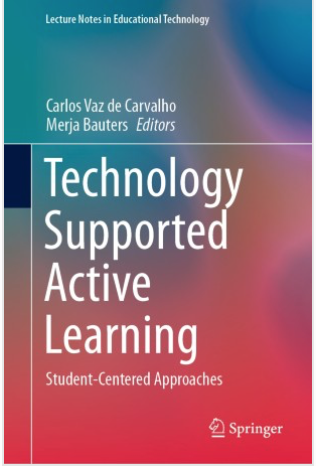Two views of mapping networked communities prevail; networks of people and networks of content. The former is a mainstream person-based view to the community, the latter suggests that contributions in blog act as separate artifacts that convey meanings, enable meaning translability and interpretation and generate similarity-based connections between artifacts. If to follow Lotman’s cultural semiotics and translation ideas, two kinds of translations may occur: subjects that are translating on the basis of similarities, shared area of meaning; and the others who translate from the areas beyond overlapped meanings.
Artifacts form the base on which the person-based community is formed. The similarity-based translations and interpretations of artifact meaning suggest that there is a community who shares certain understandings and ideas; the translations beyond similarity are like bridges between align communities. This view suggests that it is not necessary that the connection between communities happens because there is a person who shares the identity of both communities. The artifact and translation beyond the borders will create the connections even if the interpreter from the other community has no shared identity with the community where the artifact comes from. Some types how it happens are by using something from the artifact as an analogy or metaphor, also the tunnel effect is a way of transferring meanings between communities.
From Mattew Hurst
http://datamining.typepad.com/images/bloggalaxy-3.png
The visualization does two things. Firstly, it clusters blogs according to a measurement of connectivity designed to show communities. These communities are defined by a certain amount of cross linking.
Secondly, these communities are then laid out according to how much interlinking goes on between them. Interlinking between communities is measured by observing any links between blogs in each community. The gray lines between clusters represent these inter-community links.
Upon examining the clusters, one can observe clear thematic groupings. These may be topical or cultural and locale clusters.
From
What Would It Mean to Blog on the Semantic Web?
David R. Karger and Dennis Quan
2004
theory.csail.mit.edu/~dquan/iswc2004-blog.pdf

From: Tomographic Clustering To Visualize Blog Communities as Mountain Views
Belle L. Tseng
Junichi Tatemura
Yi Wu
2005
www.blogpulse.com/papers/2005/tseng.pdf
The authors developed an interesting “mountain” view to networks.
Tomography is taken from computer tomography (CT) scan that generates 3D structure of a human body by accumulating 2D slices.
Mountain view can be seen as the “contour” of the community structure since the curve shows upper bounds of paths within the social network.

Authorities are shown as peaks, and connectors are shown as valleys.
From: Discovery of Blog Communities based on Mutual Awareness
Yu-Ru Lin Hari Sundaram Yun Chi Jun Tatemura Belle Tseng
2006
www.blogpulse.com/www2006-workshop/papers/wwe2006-discovery-lin-final.pdf
The authors use mutual awareness to discover communities.
The key idea of our approach is to (1) compute the mutual awareness as edge weight in a graph-based representation of blogspace, and then (2) use a ranking-based clustering method to extract blog communities.
We compare the communities extracted by using two different features—the baseline adjacency matrix and the mutual awareness matrix.
When using the baseline adjacency matrix, the total number of entry-to-entry links pointing from blog u to blog is used. When using the mutual awareness matrix, mutual awareness is
defined by considering both entry-to-entry link and trackback links.
We use a ranking-based method to extract blog communities from the graph representation of blogosphere. In contrast to general graph partitioning problems that divide all the nodes into groups, we are only interested in groups of bloggers who are actively communicating with each other. Since the observable links such as entry-to-entry hyperlinks among blogs are rather sparse, there are many blogs that are relatively isolated in terms of their observable links.
Assume that we have a blog of interest (e.g., the top ranked blog) and want to find a community that is represented by this blog.
Then imagine that a random walker always starts from this blog.
The random walker will visit a community member more probably than a non-member. In this way, the association score is defined between a blog and the blog where the random walker starts. Based on this intuition, our method starts from a set of blogs each of which represents a community. We refer to these blogs as the seed blogs. By comparing scores of a blog associated with the seed blogs, we decide which community the blog belongs to.

Coverage measures the fraction of edges that are intra-community. Communities with higher coverage have higher quality. This is intuitive because a larger value of coverage implies more interaction is within communities instead of between community members and non-members.
A community with a small conductance has higher quality because the number of links pointing to non-members is small relative to the density of either community members or non- community members.
Interest Coefficient is used to measure how much a community member is interested in his or her assigned community.
Intuitively, individual bloggers are supposed to spend more time within their own community. If the majority of a blogger’s actions is with members of her own community, then this is a good indication that she is interested (or involved) in this community. A high interest coefficient of a blog community as a whole, suggests that the community members are highly involved.
A real community in the blogosphere should exhibit cohesiveness. That is, a group of bloggers in a tight community should have sustained interactions over time.
Human-Centered Analysis and Visualization Tools for the Blogosphere
Xavier Llor`a Noriko Imafuji Yasui Michael Welge1 David E. Goldberg
http://www-discus.ge.uiuc.edu/discussite/2006/11/29/human-centered-analysis-and-visualization-tools-for-the-blogosphere/
Paper introduces an interesting topic-centered approach to visualise concept relations in blogosphere.
Each text of a post can be turned into a n-dimensional vector of features using text mining techniques (Weiss, Indurkhya, Zhang, & Damerau, 2006). Each feature is a word in the text—once stop words are removed—and the vector represent some sort of frequency measure for each of the feature.
ISNP (Identifying Self/Non-self Post) is an algorithm and visualization technique to create predictive models of the posts. ISNP uses the post-based vectors to learn models that describe and predicts what post belong to a feed.
Once the models are learned, we can use them—for instance—to predict pertinence to a feed given a blog, compare multiple feeds to measure degrees of topic overlapping, or simple visualize the key elements that identify self in a post.

Radial map of the key terms involved in the ISNP models for each of the posts. Different posts are displayed in different colors. The area provided by the measure of relevance of the terms provide a qualitative measure of model overlapping for the different post.
From
webdiis.unizar.es/~ftricas/Articulos/Blogosphere%20community%20formation.pdf
Using content requires a vector space representation, usually term frequency/inverse document frequency. This representation is usually highly-dimensional, much more so than using links to other members of the set of webs that is going to be studied.
From: R. Klamma et al., 2006: Cross Media Social Network Analysis
R. Klamma, M. Spaniol, Y. Cao, M. Jarke: Pattern-Based Cross Media Social Network Analysis for Technology Enhanced Learning in Europe, W. Nejdl, K. Tochtermann (Eds.): Innovative Approaches to Learning and Knowledge Sharing, Proceedings of the 1st European Conference on Technology Enhanced Learning (EC-TEL 2006), Hersonissou, Greece, October 1-3, LNCS 4227, Springer-Verlag, pp.242-256
The communication between members is realized through the exchange of artefacts. An artefact is created by a member in a certain medium. The artefacts represent the information circulating in the digital social network.
I could find few analysis which could identify the meaning-based communities and their relationships with other communities. They still lack links with the community-view in the sense of identifying the layer of subjects on the basis of meanings.
There are some SOM based methods to analyse the topic-centeredness in the communities, but they illustrate cells with content rather than the structure of the community on the basis of meanings.
Political Blog Analysis Using Bootstrapping Techniques
Fritz Heckel, Nick Ward
www.cs.swarthmore.edu/~richardw/cs97/papers/04_Paper.pdf
Shared conceptualizations in the community indicate also the identity. They can be analysed by automated text analysis.
From Shared Conceptualisations in Weblogs
Anjo Anjewierden,
Rogier Brussee
Lilia Efimova
https://doc.telin.nl/dscgi/ds.py/Get/File-43470/Shared_conceptualisations_in_weblogs.pdf
Identify terms that potentially point to concepts.Expand abbreviations. Normalise terms. Delete implied and low frequency terms.
Once the concepts have been identified, we need to establish whether they are semantically related, at least according to the blogger. For this we rely on the assumption that there is some sort of semantic relation between terms if these terms are often used together in the same post. Find the cooccurrence.

This visualisation indicates that while both authors write about knowledge management (both weblogs are recognised as KM weblogs) they seem to have more agreement on related areas (e.g. learning and education) or specific KM sub-domains (e.g. communities or social capital) rather than sharing conceptualisations about knowledge management itself.
Artefact-Actor-Networks as tie between social networks and artefact networks
Wolfgang Reinhardt
Matthias Moi
Tobias Varlemann
In this paper we introduce the approach of Artefact-Actor-Networks that tries to connect social networks and artefact networks in order to make claims on the semantical connections between persons and manifold artefacts.
The resulting Artefact-Actor-Networks allow making claims about the ties between artefacts from multiple sources and the actors involved in their creation, modification and linkage.
To connect artefacts and actors under and between each other, semantic relations are required. Every relation in the network connects objects by a semantic context like isAutor or isRightHolder. With the help of Artefact-Actor-Networks participation in the lifecycle of artefacts as well as significant connections to involved actors will be outlined.
We consider the communication and collaboration with each tool (e.g. chat, e-mail anddocuments) as a single layer of the respective network. We unite these single layers in both social and artefact networks to consolidated networks that contain all actors and artefacts respectively.
In the context of Artefact-Actor-Networks there exist semantic relations between actors and artefacts (AArelation), actors and actors(ACT2 relation) and between artefacts and artefacts (ART2 relation).
http://artefact-actor-networks.net/2009/09/what-are-artefact-actor-networks/


















